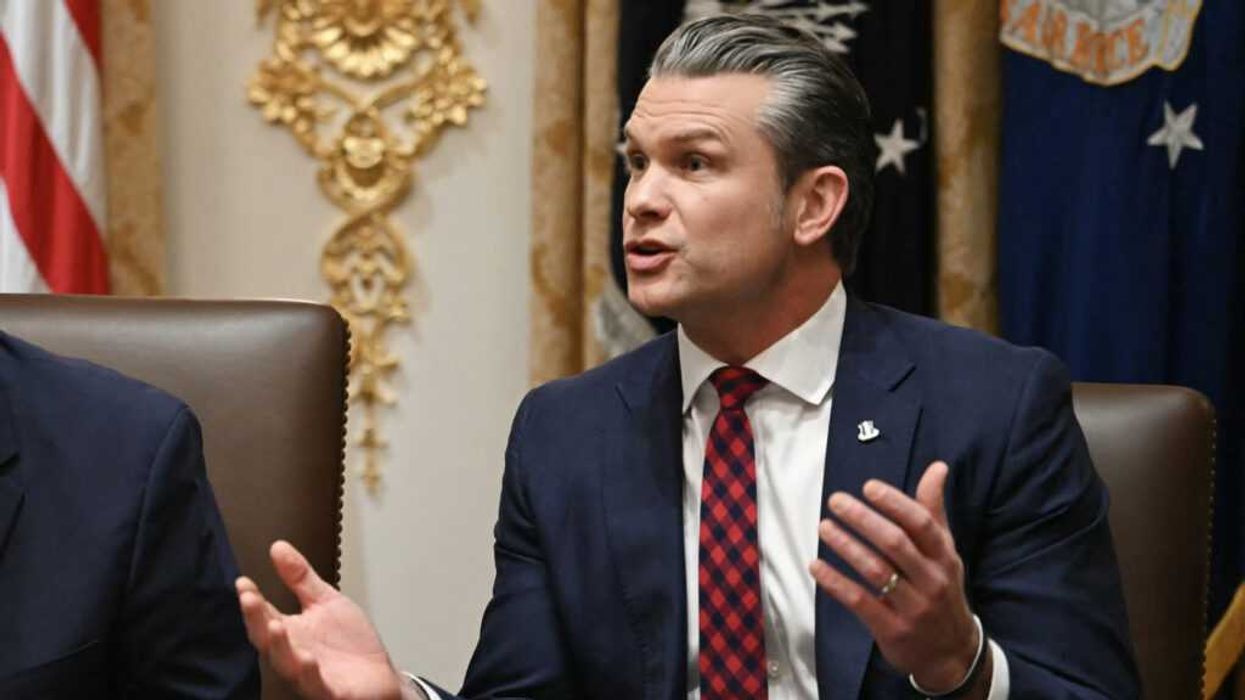Golden is the author of "Unlock Congress" and a senior fellow at the Adlai Stevenson Center on Democracy, which seeks to improve democracy on a global scale. He is also a member of The Fulcrum's advisory board.
Several weeks ago, a political reformer named John Palmer composed a tweet urging people to check out an article about "unrigging" our flawed system of government and elections. He called it a "MUST MUST READ." Palmer tagged two organizations ( @usapromise and @representus) that are already working to rid our politics of big money corruption and to make all votes count equally in our elections.
A few days ago, I noticed that Palmer's tweet had been liked and retweeted more than 1,000 times. The number seemed kind of high for a "good government" message, albeit not very meaningful on its own. But then my curiosity took me to some of the retweeters' profiles, and their self-descriptions were eye-poppingly diverse.
For example, the profile of Floridian @Rickfh4760 reads: TRUMP2020KAG Jesus is Lord! Pro-Trump, KAG, MAGA, Constitution!
Across the aisle, Kentuckian @ChristyCoston28 announces herself as: Political junkie, mom, progressive, proud member of #TheResistance #Equality #Resist #TrumpRussia #ImpeachTrump #NeverGop.
It's clear that Rick's and Christie's political poles are pretty far apart. Yet in an America where we feel like the level of political division has just about topped out, each of them favored Palmer's message about the need to repair our damaged system.
You can see where I'm going with this. And while I don't have the space here to include the profiles of hundreds of retweeters ( viewable here), I can report that a fuller review only reinforced the point.
Americans' self-identification with the two major parties has been dwindling for a decade. The proportion of the electorate who identify as independents hit a record high of 43 percent in 2014, compared to 30 for Democrats and 26 for Republicans. Five years later it is virtually the same.
But beyond our distaste for the parties, we can't stand the flavor of the overall operation on Capitol Hill – no matter who's in charge of the chambers. Over a five-year period that began in 2014, Gallup pegged Americans' confidence in Congress in a range of 7 to 12 percent.
In the 2016 presidential election, two candidates who seemingly could not have been more politically opposite of one another, Bernie Sanders and Donald Trump, both railed on campaign cash as a major cause of a "rigged" system. That message resonated with millions of Americans regardless of political stripe — because it's true.
In a poll conducted right after the 2018 midterms, 75 percent of Americans said that "ending the culture of corruption in Washington" was a very important factor in their voting decision. That proportion was higher than for any other issue, including jobs, affordable health care and protecting Medicare and Medicaid.
This brings me to a delayed disclosure: It was I who wrote the article referenced in Palmer's tweet. And it was terrific to see folks from such diametrically opposed political camps — and all points in between — responding to it in such a positive fashion.
But it's not a total surprise. The fact is that more and more of us these days are talking, writing and working on the defective state of our political system and the ways in which we must take action to correct it, a critical subject.
Last year, the Adlai Stevenson Center on Democracy convened a group of democratic reform organizations to talk about how we could all help each other in our work to strengthen the system. What would be the best way for us — and all Americans — to become better connected and more informed? Not just about the causes of the breakdown, but more importantly, the real work being done on the ground that is already generating real wins.
Just over a year later those discussions have helped spawn the birth of The Fulcrum. Thanks to assiduous work by Nick Penniman of Issue One and this site's growing crew, we now have "the only news organization focused exclusively on efforts to reverse the dysfunctions plaguing American governance."
It is undeniable that at this historical moment we're experiencing a ton of division in our political discourse. But at the very same time, a record high proportion of Americans agree that we have a corrupt system producing a defective product.
Let's report on it more. Debate about it more. Ideate on it more. Let's keep growing this army of volunteers across the country who are working to reform the rules — in order to restore the system.
This is the place. The Fulcrum. Let the leveraging begin.



















